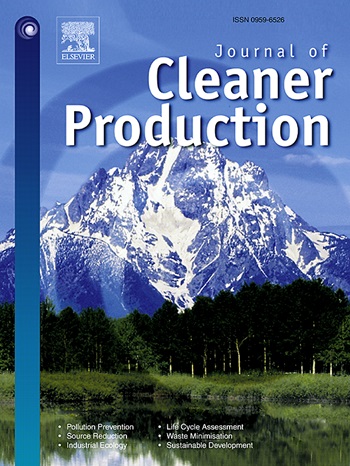CO2 uptake estimation in Japan’s cement lifecycle
IF 10
1区 环境科学与生态学
Q1 ENGINEERING, ENVIRONMENTAL
引用次数: 0
Abstract
Carbon dioxide (CO2) uptake by cement-containing products has attracted significant interest as an important source of CO2 absorption. This study provides an advanced estimation of CO2 uptake during the cement lifecycle in Japan by incorporating dynamic material stock-flow analysis into the model. Concrete stock-flow and CO2 uptake from 1870 to 2070 are estimated by reflecting country-specific characteristics such as concrete mix design, surface-to-volume ratio of buildings, presence or absence of coating resins and/or covering materials, and exposure climate. Annual CO2 uptake in the cement lifecycle was estimated to be 2.6 million tonnes/year in 2020, corresponding to 13.9% of CO2 emissions from calcination during cement production. Annual CO2 uptake by in-use concrete accounted for 86.8% of the total in 2020, whereas that by end-of-life concrete was relatively small throughout the estimation period. CO2 uptake is expected to increase slightly in the late 2020s, then decrease to 2.3 to 2.4 million tonnes/year by 2070. Our results were lowered by comparing those of previous studies, suggesting that the most critical aspect was affected by the local climate. The high-precision analysis highlighted the importance of integrating local climate factors, surface-to-volume ratio of structures based on the domestic design guidelines and examples, and modeling of end-of-life concrete, providing fundamental knowledge for incorporating CO2 uptake into the carbon-neutral strategy of Japanese cement industry.日本水泥生命周期CO2吸收估算
含水泥产品对二氧化碳(CO2)的吸收作为二氧化碳吸收的重要来源引起了人们的极大兴趣。本研究通过将动态材料库存流分析纳入模型,提供了日本水泥生命周期中二氧化碳吸收的先进估计。1870年至2070年的混凝土存量流量和二氧化碳吸收量是通过反映具体国家的特征来估算的,例如混凝土混合设计、建筑物的表面与体积比、是否存在涂层树脂和/或覆盖材料以及暴露的气候。到2020年,水泥生命周期的年二氧化碳吸收量估计为260万吨/年,相当于水泥生产过程中煅烧产生的二氧化碳排放量的13.9%。2020年,在用混凝土的年二氧化碳吸收量占总量的86.8%,而在整个估计期间,报废混凝土的年二氧化碳吸收量相对较小。预计到本世纪20年代末,二氧化碳吸收量将略有增加,到2070年将降至230万至240万吨/年。与以往的研究结果相比,我们的结果有所降低,表明最关键的方面受到当地气候的影响。高精度分析强调了整合当地气候因素、基于国内设计指南和实例的结构的表面与体积比以及寿命结束的混凝土建模的重要性,为将二氧化碳吸收纳入日本水泥工业的碳中和战略提供了基础知识。
本文章由计算机程序翻译,如有差异,请以英文原文为准。
求助全文
约1分钟内获得全文
求助全文
来源期刊

Journal of Cleaner Production
环境科学-工程:环境
CiteScore
20.40
自引率
9.00%
发文量
4720
审稿时长
111 days
期刊介绍:
The Journal of Cleaner Production is an international, transdisciplinary journal that addresses and discusses theoretical and practical Cleaner Production, Environmental, and Sustainability issues. It aims to help societies become more sustainable by focusing on the concept of 'Cleaner Production', which aims at preventing waste production and increasing efficiencies in energy, water, resources, and human capital use. The journal serves as a platform for corporations, governments, education institutions, regions, and societies to engage in discussions and research related to Cleaner Production, environmental, and sustainability practices.
 求助内容:
求助内容: 应助结果提醒方式:
应助结果提醒方式:


